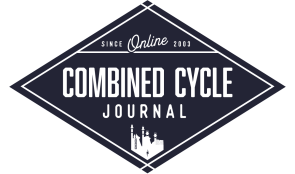
The question these days becomes why wouldn’t you send as many of your plant staff as possible to the Power Users Combined Conference, comprising the Combined Cycle Users Group (CCUG), Generator Users Group (GUG), Steam Turbine Users Group (STUG), Power Plant Controls Users Group (PPCUG), and the Low Carbon Peer Group?
As amply exhibited in the following writeups from the 2024 mega event (supporting slide decks available to end users registered at www.powerusers.org), the potential opportunities for collaboration, sharing, and learning from your peers represent value that far exceeds the investment in man-days, conference fees, and travel expenses. There’s still plenty of time to register for the 2025 edition taking place in Washington DC from August 25-28.
In recent years, the various steering committees have added healthy doses of training and refresher courses for the growing fraction of attendees who are relatively new to powerplant equipment and/or attending for the first time. These are in addition to the bread-and-butter sessions and roundtables on user-driven O&M experiences and failure causes and recovery, along with the latest vendor solutions and new technologies.
STUG and PPCUG kicked off with “Navigating Power Trends” offered by GE Vernova’s Jeff Chann on big picture topics like pace of asset retirements, grid emergencies, load growth, addition of renewable generation assets, and environmental regulations. Meanwhile, GUG and CCUG dove right in with tutorials, training, component trouble shooting, and roundtable discussions.
The formal CCUG welcome and kickoff session included the presentation of the Individual achievement award to Bill Lovejoy, NAES, who then offered some thoughts on how lifelong learning improves O&M (Fig 1). This was followed by two representatives from the Turbine Inlet Cooling Association presenting on maximizing the economic performance and electric grid decarbonization potential of CCGT systems, specifically how GT inlet cooling mitigates the impact of hot weather on plant revenues and carbon footprint. Later in the day, an FBI Special Agent from a regional office made some remarks on terrorism.
The relatively new (to the Combined Conference) Low Carbon Peer Group featured a detailed dissection and discussion of EPA Rule 111; a topic also covered in “Navigating Power Trends.” The rule would have profoundly affected options for keeping existing and future CC and GT facilities in compliance with carbon restrictions.
However, any information imparted to the audience about emissions and environmental compliance, especially CAA section 111, is probably moot now that the Trump Administration has converted the EPA from a regulatory agency to a cheerleader for American manufacturing, industry, and energy production, distribution, and consumption. Many in the user community will undoubtedly praise this reversal, but it does add yet another level of unpredictability to long-term planning.
Keep in mind that, in keeping with recent practice at user conferences, the GE and Siemens slide decks are not available at the Power Users site. However, CCJ was able to capture some of the GE content from notes taken during attendance. One example is from a presentation, “CC Forced Outage Drivers,” an analysis of three years of unplanned outages between 2021 and 2023.
It probably comes as no surprise that the gas turbine (GT) was responsible for 55% of the 19,000 fleet events and 800,000 hours of total downtime, generator 20%, steam turbine/generator 10%, HRSG 2.5%, balance of plant (BOP) 10%, and other 4%. Electrical systems account for 40% of downtime and 19% of events, far and away the subcategory with the largest impact. 20% of the events are longer than 24 hours in duration.
Another piece of insight: HRSGs behind upgraded GT/Gs are experiencing more damage after the upgrade.
Another CCUG roundtable towards the end of the Thursday sessions dealt with “How to temporarily deal with plant failures while you work on permanent solutions.” Topics covered include steam and water leaks, more frequent borescope inspections to track known issues, and adjusting the operating mode until repairs can be made. In the last category are open cycle (100% steam bypass to the condenser), protecting equipment following abnormal operations, and performing a “test run” to determine limitations under abnormal operating conditions.
Access the content specific to each of the 2024 Power Users Combined Conference tracks here:
- Addressing weather resilience, risk management, and outage execution @ CCUG
- Focus on D11 strategies, EHC pitfalls, and skilled labor shortages @ STUG
- Generator users share failures, fixes, and forward planning @ GUG
- Advanced controls strategy and fundamentals @ PPCUG
Closing reminder. End users registered at www.powerusers.org are encouraged to download the full slide decks from the 2024 conference and put the shared experience and lessons learned to immediate use. The material spans everything from outage planning and controls upgrades to generator rewinds and cold-weather prep—practical, field-tested guidance that speaks directly to today’s plant challenges. And if you’re not already planning to attend the 2025 Combined Conference, set for August 25–28 in Washington DC, now’s the time. Few events offer as much actionable content, peer exchange, and expert access in one place.





